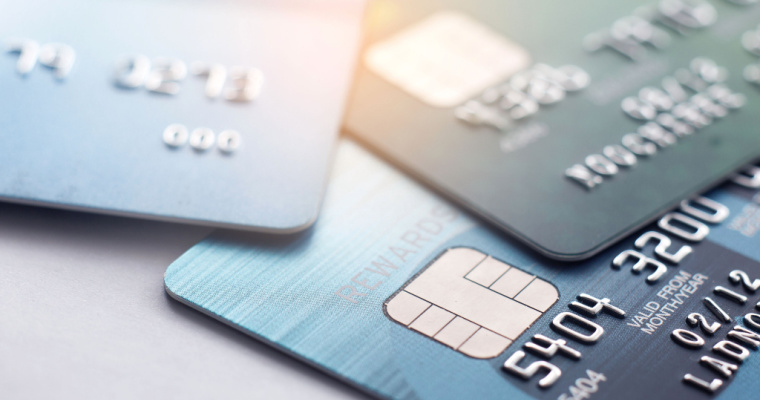Understanding the Importance of BINs in Online Payment Security

Every ecommerce merchant faces suspicious transactions at one time or another. But to make informed risk management decisions, you need a full view of your payment data.
That’s where BINs come in. Learn how to identify fraudsters by their bank identification numbers. Then, funnel those insights into your fraud prevention and chargeback management strategies.
What is a BIN?
A BIN is the first four or six digits on your credit card that identify the issuer of your card. It also serves as a key component of your fraud and chargeback management strategy.
A card’s BIN is assigned by its issuer based on the industry of the issuing company and can be categorized into a few different groups — with the first digit identifying the major industry identifier (MII). For example, Visa cards start with 4 as most card issuers are in the banking and financial industry while Mastercard cards begin with 5. The remaining digits then identify the issuing institution or bank.
During each transaction, the BIN is responsible for completing the first step of the payment process, known as authorisation. This involves verifying that the card and account are valid and that the amount of the purchase is within the available limits on the card. The authorisation process happens very quickly behind the scenes as numbers are checked against a third-party service provider. Most ecommerce retailers have their payment processor handle these checks for them.
The first digit of a BIN is often referred to as the “major industry identifier” because it helps to distinguish between different types of cards. A credit card’s BIN is important to merchants because it allows them to identify the type of card used and then target specific offers or promotions to that card’s owner. It can also help merchants prevent fraudulent transactions and protect their customers by allowing them to know when their card is being used outside of the country it was issued in.
How do BINs work?
BINs are the identifiers that distinguish one bank’s payment cards from others. When a customer uses their credit card at an online merchant, the payment system uses a BIN lookup to verify that it’s from a legitimate bank. In the case of a breach, it helps e-commerce merchants detect fraudulent transactions and prevent them from being approved.
A BIN can also be used to identify suspicious transactions. For instance, if a card’s BIN indicates that the card issuing bank is in a different country than the billing address on the card, it can flag the transaction as suspicious and trigger additional checks by the merchant.
In addition to helping merchants evaluate and assess payment card transactions, BINs allow them to keep financial information private and protected against security breaches and fraud. This allows merchants to accept more types of payment and process transactions quickly and efficiently.
To ensure the safety and integrity of financial transactions, BINs are regulated by a number of rules and guidelines. For example, a fintech can’t launch a new card without first obtaining a unique BIN for it. This can be a lengthy process, which often requires significant resources and can cause a startup to burn through its runway of funding before it can start making money. Once a BIN is obtained, it can be used to create cards and enable a payment platform’s services, including mobile wallets, contactless payments, and recurring payments.
What are the risks of BIN attack fraud?
There are dozens of tasks that go into processing a single payment card transaction. During the first step, the authorisation process, BINs are checked against a database behind the scenes to ensure the account or card is valid and available for the purchase amount. Without this critical step, the entire transaction would be denied by the card issuer, preventing a sale from occurring.
Fraudsters use a brute force method when attempting to hack into a cardholder’s information. This means that they test thousands of random number combinations until they lluck upon one that works. The card is then used to make a number of fraudulent transactions until it gets blocked or the fraudster is caught. This type of fraud can lead to lost funds for a merchant, and reputational damage for a payment gateway that fails to prevent BIN attacks on its own.
The good news is that many of the same tools and methods that fraudsters use to thwart online transactions can be used by businesses to defend against them. Incorporating BINs into a holistic fraud prevention and chargeback management strategy is a great way to protect against these types of attacks.
What are the benefits of BINs?
BINs are a vital part of the credit card security ecosystem. They help merchants and payment processors confirm the validity of card-paying customers and guard against fraud. By enabling them to verify the issuing bank at each transaction level, BINs make online shopping safer and faster for all parties.
To prevent fraud, businesses that accept credit cards must keep a close eye on all transactions. Using a BIN lookup allows them to identify suspicious data points, such as the location of the card issuer bank versus the shipping address, that might indicate fraudulent activity. Using this information, they can quickly take action to protect their business and reduce the risk of chargebacks.
In addition, BINs can be used to identify specific card issuers for the purposes of routing, authorization, and other security processes. This ensures that all transactions are processed with speed and accuracy, improves the customer checkout experience, and enables companies to evaluate their payment processing risks more effectively.
As the credit card industry moves toward the longer eight-digit BIN format, merchants, POS software providers, payment service providers, and card issuers will need to adapt their systems and infrastructure. It’s important to understand the new BIN structure and its implications so that you can make a smooth transition to these longer numbers without any disruptions. A good first step is to review the specifications and recommendations offered by the credit card networks and work with your service suppliers to guarantee migration preparation.







